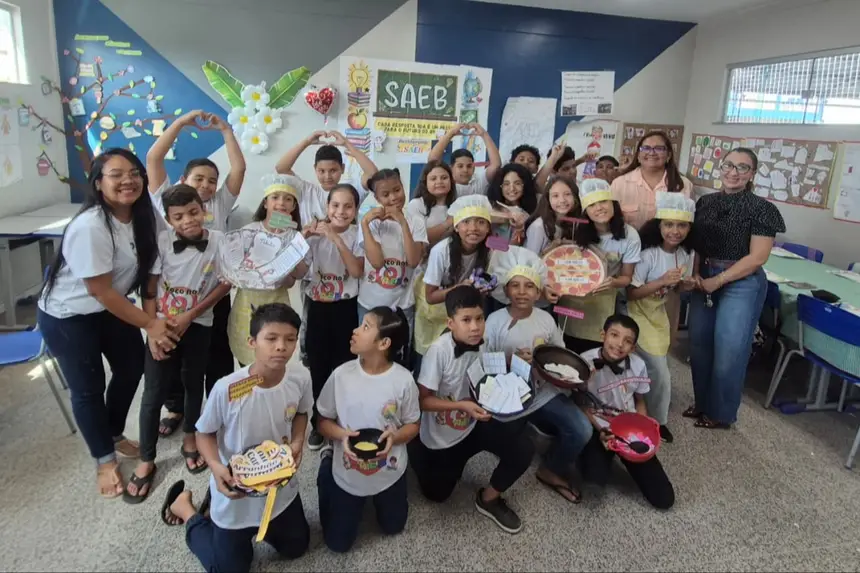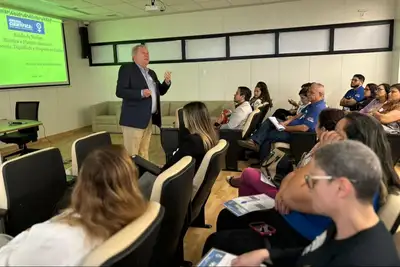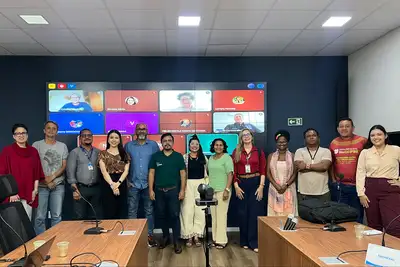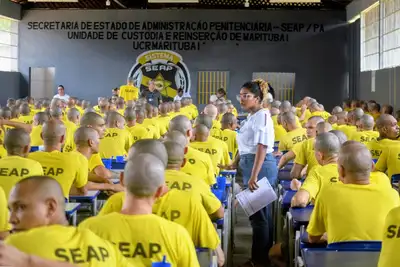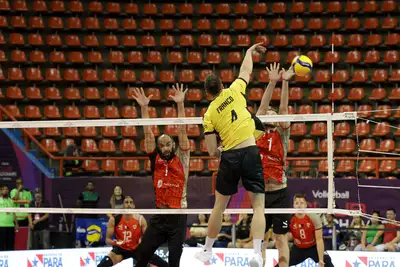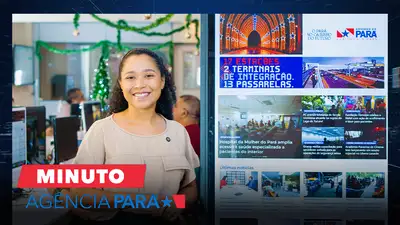State Bilingual Full-Time School in Icoaraci Uses Typical Dishes to Enhance Students' Learning
The pedagogical project of the Mestra Idalina School reinforces the commitment to teaching and learning for Saeb 2025
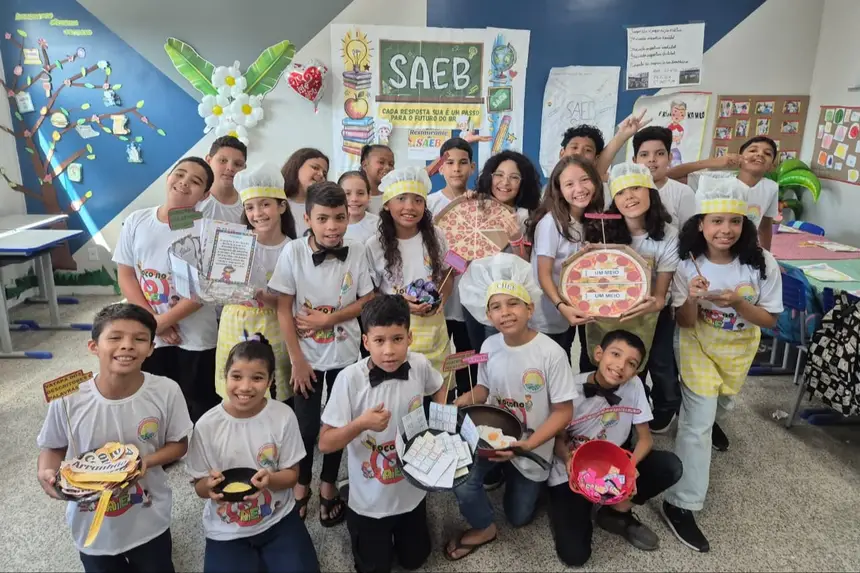
Protagonism, learning, and creativity are key words at the State Bilingual Full-Time School Mestra Idalina Rodrigues Pereira, in Icoaraci, a district of Belém. To enhance the learning of students who will take the Basic Education Assessment System (Saeb) 2025 exam, the school unit created a pedagogical project that involves what people from Pará generally love: typical dishes from the regional cuisine.
Maniçoba of textual genres, vatapá of descriptors, açaí of numerals, feijoada of the four operations, fried reading, letter soup, and fraction pizza are some of the dishes served at the “Saeb Restaurant.” The initiative was created to reinforce the contents of Portuguese Language and Mathematics worked with 5th-grade elementary school students.
A success in the school community, the Saeb Restaurant serves knowledge with flavor and stimulates the participation and development of students, explains the teacher and project creator, Elba Costa. “We are preparing for the Saeb and, thinking about that, I created the ‘Saeb Restaurant’ and brought the idea to the classroom. They [students] contributed with the topics we worked on in the subjects, such as textual genres, mathematics, and the descriptors of Saeb. We always listen to their opinions, we work a lot on protagonism at school, and that way they helped put everything together. They chose the dishes: ‘oh, let’s use the typical foods from our Pará’; ‘aunt, let’s see, the maniçoba that can be from the textual genres’; ‘the açaí can’t be missing, aunt’ and that’s how we built it,” she said.
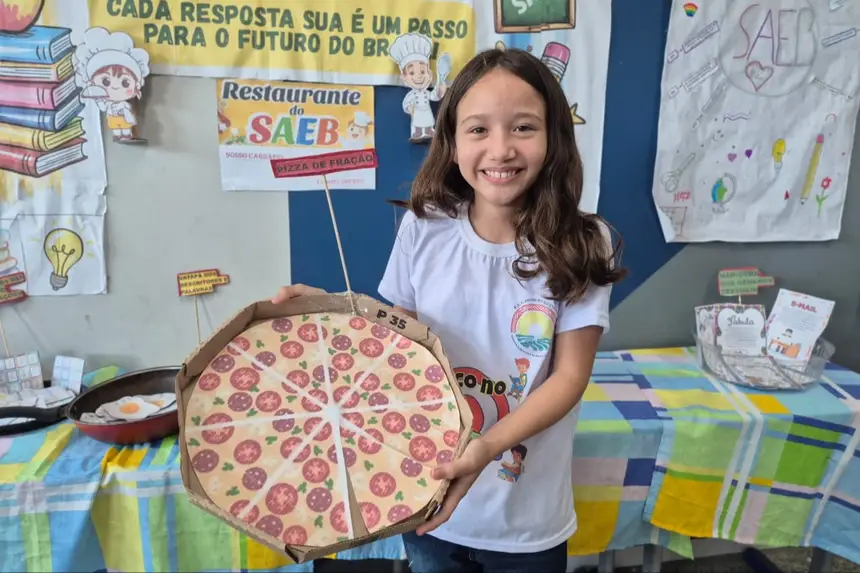
Furthermore, according to the educator, the initiative has borne fruit. “This type of activity makes a difference in daily life, in learning because they learn in a playful way. Today, if I ask, for example, what news is, they already know how to say, explain what the textual genre is. As a teacher, I feel proud to see them like this. I see that it has results. Everyone leaves home early and we spend the day together at school, and with that, we see that it pays off,” highlighted teacher Elba.
For student Luize Lee, the project stimulates interest in the subjects. “The Saeb Restaurant is interesting because it encourages students to be more interested in studies, in the contents. For me, this is a big incentive. I have already learned things like punctuation marks, textual production, material and immaterial heritage, coexistence project, textual genres, fractions, multiplication tables, and other things that encompass mathematics. When I think of a restaurant, I think of something good, and that makes me want to participate,” she said.
Excited about the project results, student Ester Lima has high expectations for the Saeb exam. “This project is good, it allows us to learn various things, we can use these practices to learn a lot. Before I didn’t know how to divide, now I do. Participating in the project makes me want to get a good grade on the Saeb,” she commented.
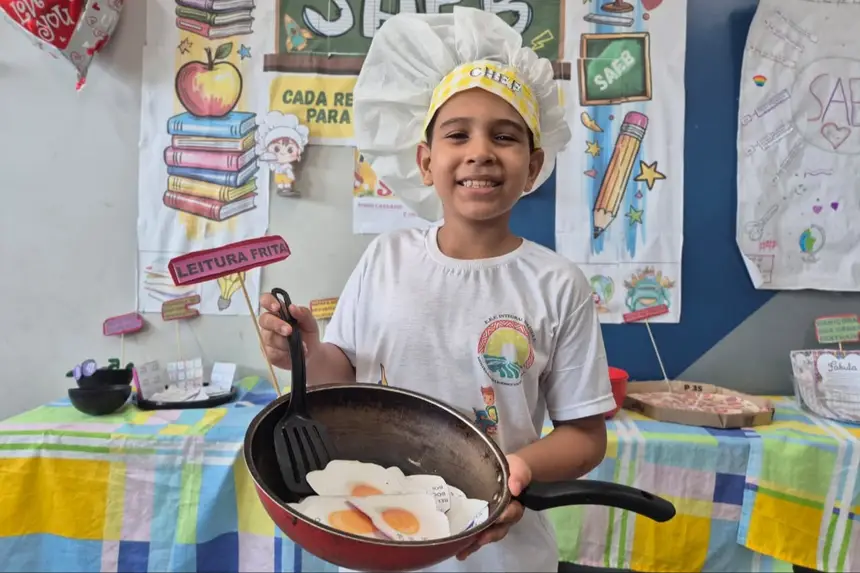
Saeb 2025 - More than just a simple exam, Saeb measures students' performance, influences the Ideb, and guides the pedagogical planning of public schools. Administered every two years, the exam represents a challenge for educational institutions across the country.
The schools in the Pará state network have been dedicated to enhancing teaching and learning with a focus on the results of Saeb 2025. With projects, actions, simulations, and training, managers, teachers, and students are increasingly focused on achieving excellent results in the exam.
“Students have a significant process ahead of them until they reach external assessments, and to ensure this doesn’t become tiring, this work is done in a playful way, in a manner that is interesting for the student. So all the pedagogical strategies undertaken by the teacher, stimulated, and with the student being the protagonist, giving their suggestions, creating together with the teacher, giving their opinions on how they think is best, when they are tired, changing strategies, serve precisely for that, so that the teacher achieves the objectives, works on the necessary descriptors, so that students arrive on the day of the exam prepared and have truly learned,” reflected the unit manager.
New pedagogical model - The State School Mestra Idalina is the 1st bilingual full-time school in Portuguese-Spanish in Pará. Delivered by the Government of Pará in April of this year, the school follows a new pedagogical model in the state network and serves about 700 students from preschool to high school.
With over 4,000 square meters, the innovative structure features 23 classrooms, an administrative block, an auditorium, a Specialized Educational Service Room (SAEE), a kitchen, male and female changing rooms, and facilities for People with Disabilities (PcD), a sports court, a sand court, a recreation area, a library, a multidisciplinary laboratory, a multipurpose room, a student council room, among other essential spaces for the development of quality integral education, all signposted in Portuguese and Spanish, making bilingual education tangible inside and outside the classrooms.
In addition, the school has a unit of the Center for Innovation and Sustainability in Basic Education (Ciseb), which proposes innovative solutions for both student teaching and professional development for educators. Ciseb integrates the Public Education Policy for the Environment, Sustainability, and Climate of Seduc and provides a modern environment, prepared for the continuous training of teachers and for student learning.
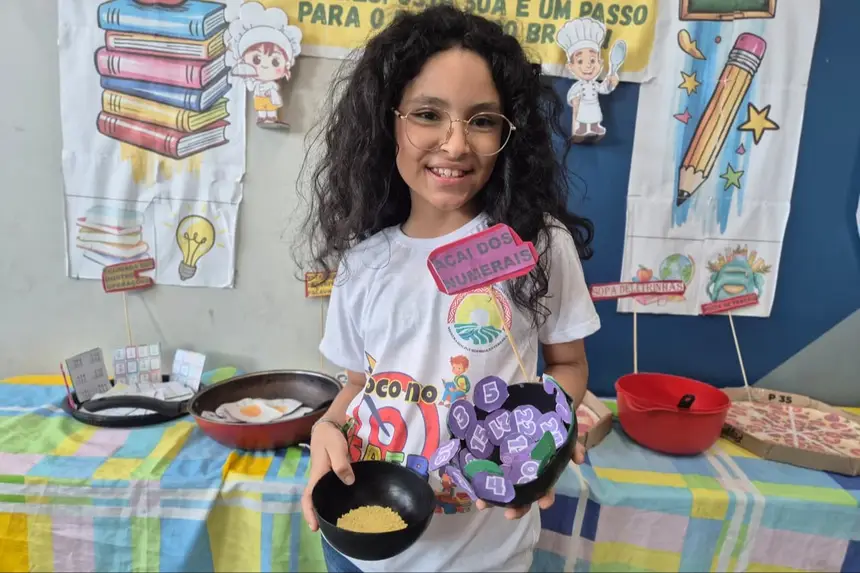
Full-Time - For 2025, the State Department of Education (Seduc) has established 49 more units that adopted the Full-Time Education Program (PEI), totaling 161 schools with this pedagogical model.
In addition to the increase in the number of schools, the positive impact of this expansion is clearly visible in the growth of enrollments. In 2018, schools in the full-time modality in Pará served 6,000 students; in 2025 there was a leap to 48,000 enrollments, an eightfold increase in capacity. A result that reflects the State's commitment to providing more opportunities for students, with access to quality integral education.
With this expansion, Pará consolidates a model of education that seeks equity and excellence, ensuring that more students have access to an integral educational formation that prioritizes knowledge and human development.


